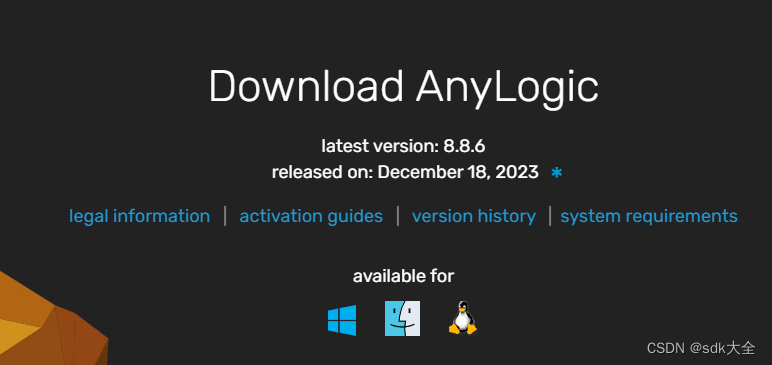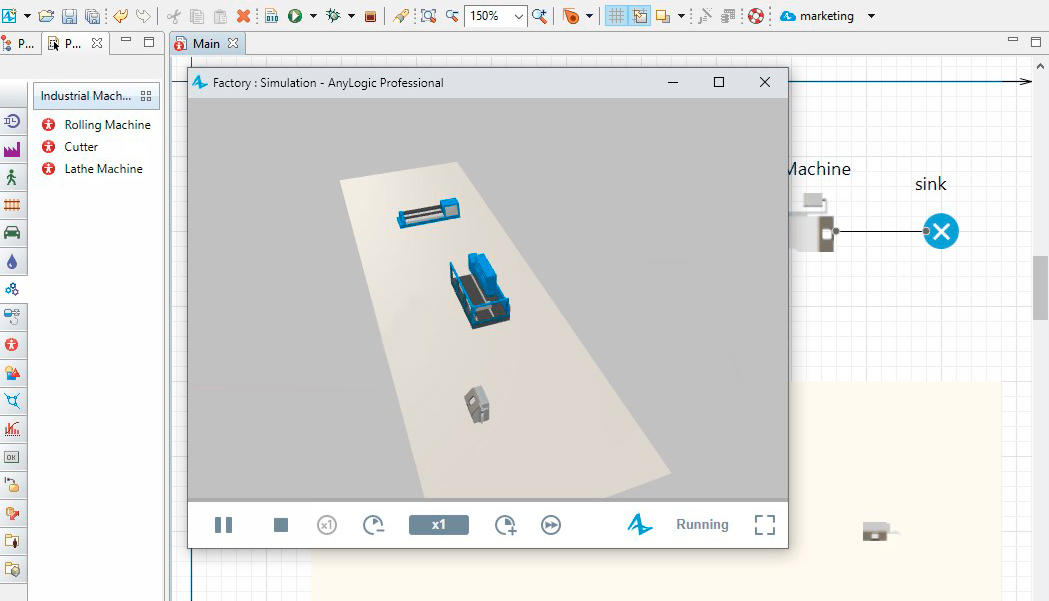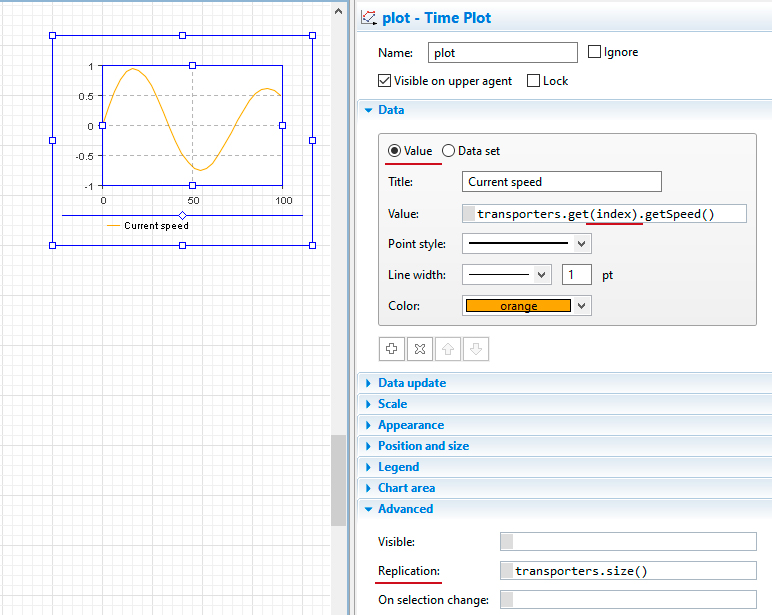AnyLogic Pro 8.8.6 Crack
When you need to build a model that closely reflects a real-world facility, you might end up with large-scale?networks. Those are usually found in ports, terminals, warehouses, and factories – facilities with complex internal logistics.
In such cases, the IDE (integrated development environment) performance of the chosen simulation tool becomes crucial. In AnyLogic 8.8.5, we made several notable changes that improved the performance of the IDE.

Here’s an overview for advanced AnyLogic users.
Panning, zooming, navigation, and more
Now, panning, zooming, and?navigating?(through Search or Ctrl + F/Command + F) to a particular element in the models with large networks have become smoother. Any modifications, such as adding new elements to the model or moving the entire network around, are also much faster.
This is also true for the flowchart blocks added to large-scale models. Before, there were two options: either have a fast IDE or code completion for newly added elements. You would need to decide which one was the priority at that moment.
In AnyLogic 8.8.5, you can enjoy both. You can easily add flowchart blocks with code completion accessible right after the element is dropped on the Canvas.
Java limitations for large-scale projects
While developing large models, some of our users sometimes faced the “Java 64k limit” error. It was caused by the limitations that exist in the Java language and could be avoided only by dividing an agent that has a huge network into smaller agents.
Our developers made a range of improvements to the AnyLogic internal code generator. As a result, there’s a possibility to go around the limits of Java and keep that single agent whole. So now massive Process Modeling and Material Handling networks, railroads, car roads, and complex layouts with numerous walls in Pedestrian models can be safely created within a single agent with an extremely low chance of hitting the limit.
Note:?Although you can now create huge single agents, keep in mind that for?proper model structure?and easier model maintenance, it might be better to have several smaller agents instead.
Agent animation in custom libraries

When custom library elements are dropped on the Canvas, their 3D objects
appear in the upper left corner (by default) and can be dragged to the animation area
Advanced users who frequently work with large-scale models tend to reuse their parts in new projects,?creating custom libraries. Sometimes agents that may be used as elements of the new library have rich 3D animation that may also contain moving parts.
In the 8.8.6 release, 3D objects representing the animation of agents can be exported during the creation of a custom library. Therefore, when you drop an element from the custom library on the Canvas, the animation associated with that element will automatically be added to the model as well.
Also, you can use these 3D objects as icons for the custom library elements.
Visualization improvements
Charts and plots that are used for visualization have also faced some changes. Now, when you hover the mouse cursor over a chart during a model run, you’ll see more precise information.

Hovering over charts to see more precise information
For working with multiple agents, plot replication has also been improved. You might find it particularly useful when working with agent populations. For example, you might have a fleet of transporters in your model and want to have a plot showing the current speed of each transporter.
There’s no need to multiply that plot manually. Instead, use the local variable “index” in the Value field of time plots, time stack charts, and time color charts.

Plot settings for replication

Plot replications for each transporter’s current speed
These were major improvements that you might find helpful when working on huge projects with large-scale networks. More details on all the updates and bugfixes released
本文来自互联网用户投稿,该文观点仅代表作者本人,不代表本站立场。本站仅提供信息存储空间服务,不拥有所有权,不承担相关法律责任。 如若内容造成侵权/违法违规/事实不符,请联系我的编程经验分享网邮箱:chenni525@qq.com进行投诉反馈,一经查实,立即删除!
- Python教程
- 深入理解 MySQL 中的 HAVING 关键字和聚合函数
- Qt之QChar编码(1)
- MyBatis入门基础篇
- 用Python脚本实现FFmpeg批量转换
- 关于接口的安全性测试,这几点你应该掌握了
- mysql数据库学习笔记(1)
- ARS430毫米波雷达标定步骤
- 分库分表问题的研究与部署方案
- 解决Echarts地图在下钻时缩放了地图,到了下级地图时,出现错位
- typescript使用手册
- MySQL事务
- EmbedAI:一个可以上传文件训练自己ChatGPT的AI工具,妈妈再也不用担心我的GPT不会回答问题
- 大创项目推荐 题目: 基于深度学习的疲劳驾驶检测 深度学习
- 某水电建设集团绩效考核体系建设项目纪实